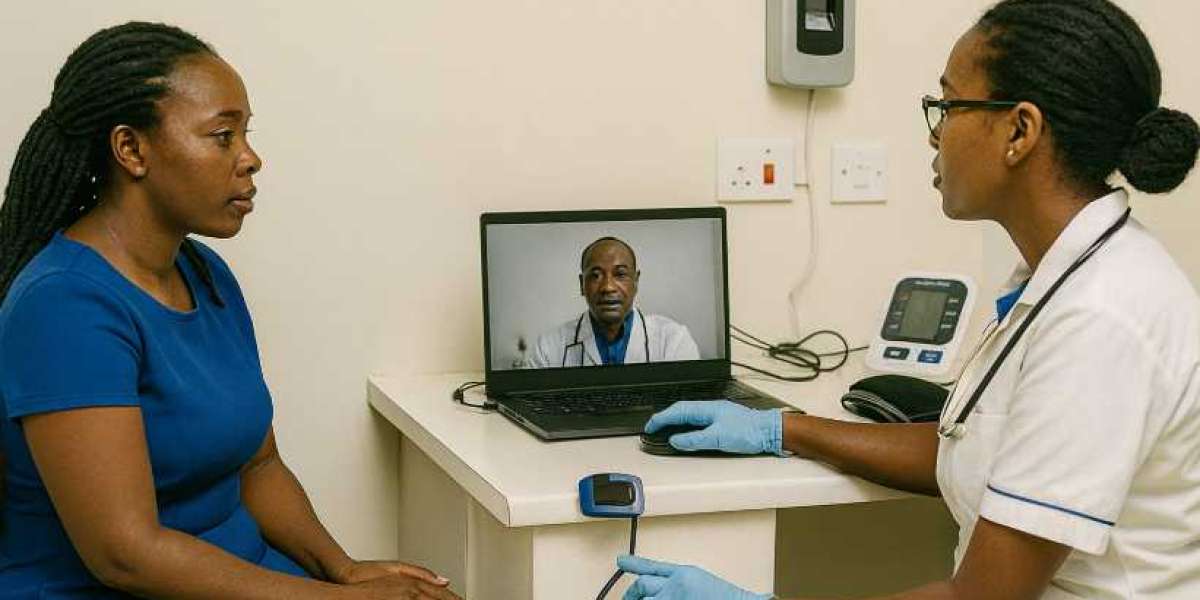In the remote plains of Samburu, where healthcare journeys once began with hours of walking, something new is happening. A patient’s visit now starts with a biometric scan at a modest community clinic. Within minutes, a nurse connects the patient to a physician sitting in Nairobi — via fiber-optic-powered video link. Vital signs are checked on-screen, and medical records update in real time.
This isn’t an isolated trial or a donor-driven pilot. It is part of a larger, quiet transformation unfolding across Kenya, where community healthcare is being reimagined through digital infrastructure, private sector leadership, and a changing policy landscape.
At the center of this transformation are organizations like Bliss Healthcare, backed by visionaries such as Jayesh Saini, who are designing systems where care no longer follows roads — it follows connectivity.
The Problem: Community Health, Historically Underserved
For decades, community health in Kenya has operated on thin resources and enormous expectations. Community health volunteers (CHVs) have been the country’s frontline, yet often without tools, supervision, or integration into formal care systems. Their work — crucial during vaccination campaigns, maternal visits, or health education — was siloed from national healthcare records or urban diagnostics.
The distance between communities and clinical expertise has remained vast, especially in northern and coastal counties. Lack of consistent power supply, connectivity, and health information systems has made follow-ups erratic and early diagnosis rare.
Despite Kenya’s strong public health ambitions, the gap between policy and patient experience in remote areas remained stark. That is — until digital innovation began to rewrite the rules.
The Solution: Infrastructure, Integration, and Innovation
The last five years have seen a convergence of technology, telecom infrastructure, and healthcare need. Fiber-optic networks have expanded across counties. Smartphone penetration has increased even in semi-arid zones. And cloud-based health systems are no longer luxuries — they’re lifelines.
This ecosystem has enabled the rise of digital outreach clinics, a new model of care where physical clinics are powered by digital backbones. These clinics:
- Operate with minimal physical equipment but high diagnostic capability
- Link community nurses to specialists via video and AI-based triage tools
- Transmit records securely to national repositories
- Coordinate with pharmacies and labs for home-based delivery and pickups
Organizations like Bliss Healthcare, under the leadership of Jayesh Saini, have played a catalytic role in this transformation. By integrating community-level care with teleconsultation hubs, digital dashboards, and mobile health units, they’ve created a new kind of access — frictionless, responsive, and rooted in trust.
Notably, these systems are not just urban solutions pushed into rural zones. They are community-native, built from ground realities, with outreach workers trained to operate digital tools and manage local health campaigns digitally.
Policy Enablers: Government as a Platform
The Kenyan government has taken meaningful steps to enable this shift. Under the National Digital Health Strategy, counties are now encouraged to invest in health information systems and support public–private partnerships for last-mile care.
The Ministry of ICT’s partnership with the Ministry of Health has facilitated:
- Digital identification systems that support patient tracking
- Connectivity incentives for health facilities in underserved areas
- Frameworks for remote prescription, licensing, and recordkeeping
However, execution remains uneven. What distinguishes success stories like those of Jayesh Saini’s initiatives is how quickly they’ve moved from pilot to platform — showing that with the right mix of tech and trust, community health can be digitized without being depersonalized.
Case in Point: Digital Clinics in Meru and Bungoma
In Meru County, where traditional clinics are few and far between, a series of digital outreach clinics now operate through a public-private framework. These clinics are staffed by trained community health officers who carry out in-person assessments and connect patients via tablet to doctors based at Lifecare or Bliss networks.
A digital health dashboard enables doctors to follow up on chronic cases, send e-prescriptions, and even schedule lab tests at nearby partner facilities. In Bungoma, a similar model integrates these clinics with Bliss Healthcare’s diagnostic network, allowing faster access to tests and reducing wait times by over 40%.
These examples show that community health no longer needs to be isolated from national systems — it can be their strongest arm, if properly equipped.
The Vision: Smart Clinics for Every County
The long-term ambition is not just more digital clinics — it’s smarter, adaptive community health ecosystems. These systems will use predictive data to prevent disease outbreaks, optimize medicine stocks, and triage cases before they escalate.
This model relies not only on hardware or software but on interoperability and strategic vision — something Jayesh Saini and his team have embedded into their planning. By ensuring that every community touchpoint is linked to specialists, diagnostics, education tools, and emergency response, they are mapping a new kind of health grid — one that prioritizes both reach and depth.
Future iterations could see:
- Geo-tagged patient dashboards for community health workers
- Satellite-supported virtual health booths in areas beyond fiber reach
- AI-driven population health tools to spot emerging risks in real-time
Importantly, this ecosystem can scale without replicating the costs of traditional hospital builds — making it a financially viable solution for Kenya’s rural future.
Conclusion
Kenya’s path to health equity won’t be paved only with bricks — it will be powered by bytes. From the winding footpaths of Marsabit to the growing fiber-optic grids of Vihiga, community healthcare is being digitally reborn.
And behind this quiet shift is a generation of leaders, platforms, and partnerships — including those led by Jayesh Saini — working to ensure that care is not a privilege of proximity, but a guarantee of citizenship.
In the journey from footpaths to fiber optics, Kenya is discovering that the future of health doesn’t always come with fanfare — sometimes, it comes in a signal.











